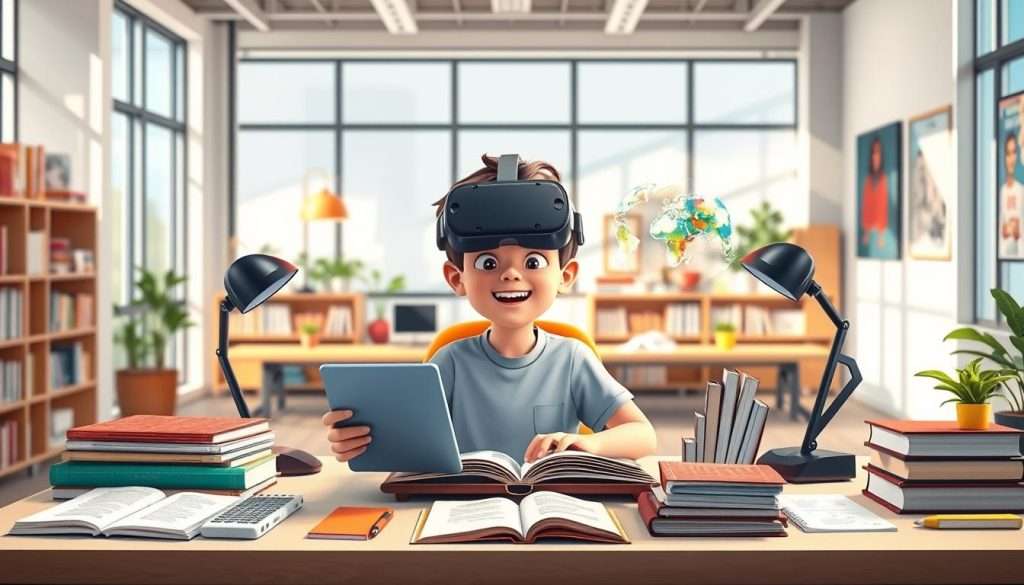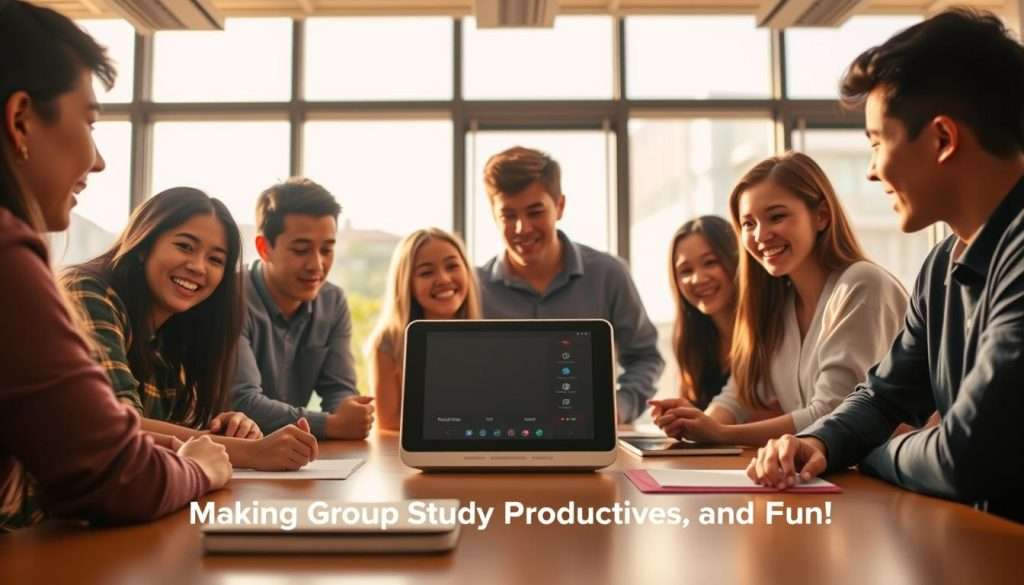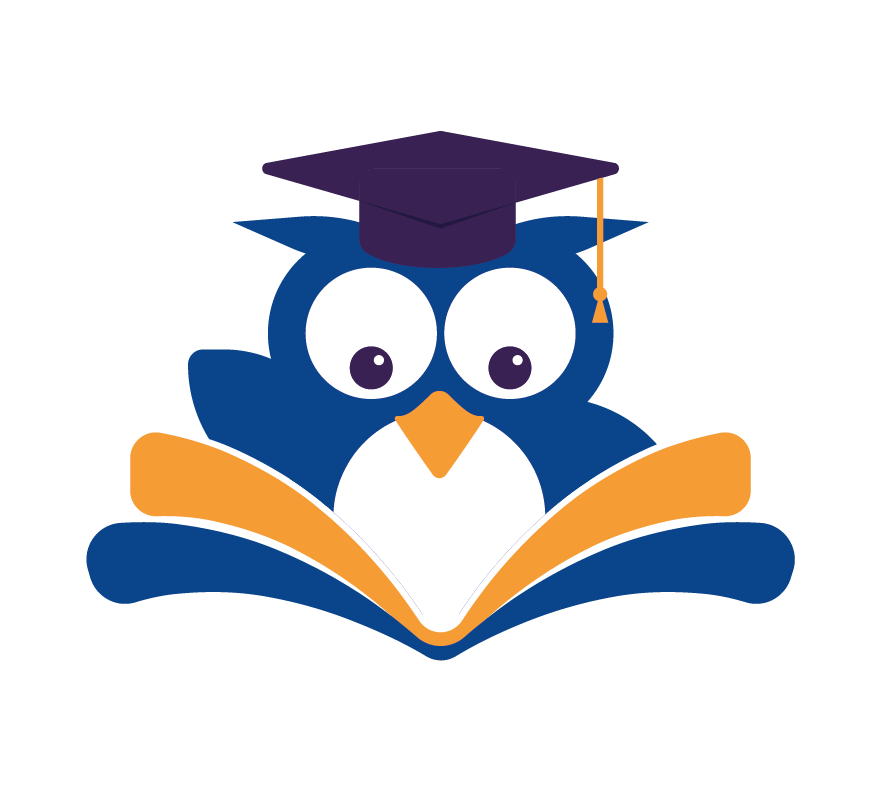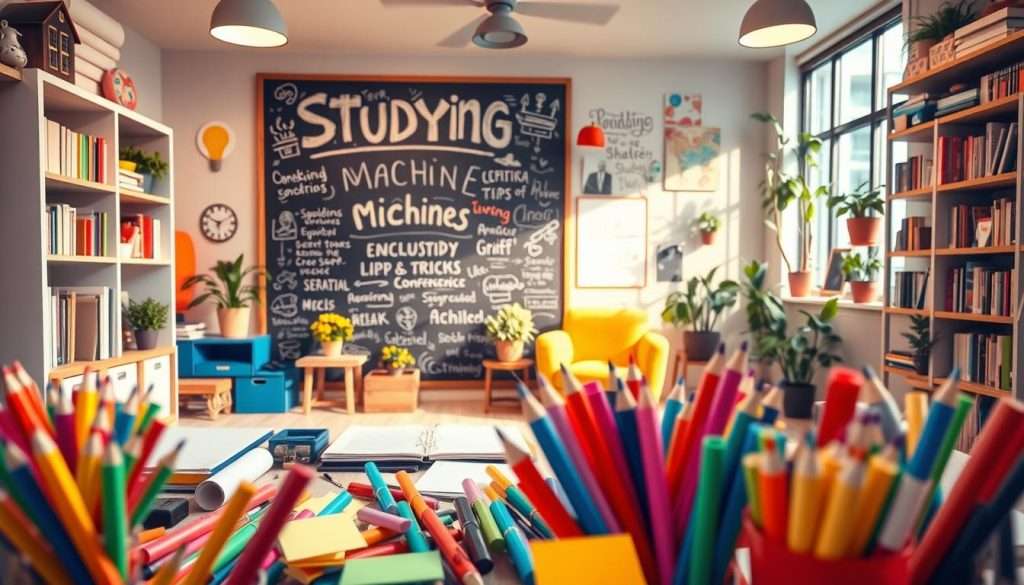Are you tired of studying feeling like a chore? We can transform it into an enjoyable experience with the right approaches. Recent studies show that simple tips like studying in advance and creating a clean space can significantly enhance your learning experience.
By adding these fun study tips to your daily routine, you can make studying fun and stay motivated. In this article, we’ll explore various tips and tricks to help you achieve your study goals without feeling overwhelmed.
Key Takeaways
- Study in advance to reduce stress
- Create a clutter-free study space for better focus
- Utilize study apps to enhance your learning experience
- Stay motivated with engaging study techniques
- Achieve your study goals with effective study habits
The Psychology Behind Enjoyable Learning
Learning can be fun, and when it is, our brains open up more. This makes us understand and remember things better. It’s not just a nice idea; science backs it up. Studies show that fun learning boosts memory, making studying more effective.
How Your Brain Responds to Fun While Learning
Our brains love fun and respond well to it. When we’re enjoying ourselves, our brains release dopamine. This chemical is linked to happiness and motivation. It helps us stay focused and engaged, making engaging study techniques work better.
The Connection Between Enjoyment and Memory Retention
Learning that’s fun does more than just make us happy. It also helps us remember things better. Research shows that when we enjoy learning, we’re more likely to recall what we’ve learned. This is because happiness strengthens the connections in our brain, helping us remember more.
Research-Backed Benefits of Enjoyable Study Sessions
Studies prove that enjoyable study sessions lead to better grades. Adding fun to our studies boosts our motivation and reduces stress. This method is especially helpful for students who find traditional studying hard.
Why Traditional Study Methods Often Fail to Engage Students
We’ve all been there – stuck in a cycle of boring study sessions that fail to inspire. Traditional study methods, while familiar, often lead to monotony. This causes students to lose interest in learning. It’s time to shake things up and explore ways to make learning fun again.
Common Pitfalls of Conventional Study Techniques
Conventional study techniques often rely on rote memorization and repetition. This can be dry and unengaging. It fails to stimulate curiosity or encourage active participation, leading to a lackluster learning experience.
By understanding these pitfalls, we can begin to adopt fun education strategies. These strategies promote a more engaging and effective learning environment.
The Monotony Trap and How to Escape It
The monotony trap is a common issue with traditional study methods. The same old techniques are used repeatedly, leading to boredom and disengagement. To escape this trap, it’s essential to mix things up and incorporate variety into your study routine.
This could involve using different study materials, such as videos, podcasts, or interactive apps. These can keep learning fresh and exciting.
Signs Your Current Study Approach Needs a Refresh
So, how do you know if your study approach needs a refresh? Here are some signs to look out for:
- You’re consistently feeling bored or disengaged during study sessions.
- You’re struggling to retain information or recall it during exams.
- You’re feeling stressed or anxious about studying.
If you’re experiencing any of these signs, it might be time to explore newways to make learning fun. Adopt a more engaging study approach.
How to Make Studying Fun: Core Principles and Strategies
Studying doesn’t have to be dull. Here are the main ideas to make it fun. To make your study sessions better, find out what works for you and keep things interesting.
Identifying Your Personal Learning Style
We all learn in different ways. Some like pictures, others like listening, and some like doing things. Knowing your learning style is key to enjoying studying. For example, if you like pictures, using diagrams and mind maps can really help.
Setting Enjoyable Yet Challenging Goals
It’s important to set goals that are fun but also a bit tough. You should feel proud of yourself without feeling too stressed. Break big tasks into smaller ones and reward yourself when you finish. This makes studying fun and keeps you motivated.
Balancing Structure with Creativity in Your Study Routine
Having a study plan is good, but don’t forget to be creative. Try different study methods to keep things fresh. For instance, switch between reading, making summaries, and testing yourself to keep your study sessions lively.
By using these tips, studying can become more fun and effective. The main thing is to find what works for you and keep doing it.
Creating an Inspiring Study Environment
Turning your study area into a place that inspires can really help you learn better. A messy and dull space can make it hard to focus. So, let’s look at how to make a study area that’s both useful and fun.
Designing a Space That Stimulates Learning
To make studying more fun, create a space that excites your senses. Natural light is a good start; it can lift your mood and help you concentrate. Try to place your desk near a window if you can.
Think about the layout of your study area too. A comfy, ergonomic chair and a big desk can make long study times easier.
Using Colors, Sounds, and Scents to Enhance Focus
Colors, sounds, and scents can really affect how well you focus. For example, blue tones help you relax and focus better. Certain sounds, like soft music or nature sounds, can also help you concentrate.
Adding essential oils like peppermint or lavender to your study area can also be helpful. They can lower stress and clear your mind.
Organizing Study Materials in Visually Appealing Ways
An organized study space is not just pretty; it’s also practical. Using color-coded folders and labelled storage bins keeps things tidy and looks good. This makes studying more fun and efficient, letting you focus on learning without getting distracted.
By using these fun study tips and engaging study techniques, you can turn your study area into a place that sparks creativity and productivity.
Gamification Techniques to Transform Learning into Play
Turning study sessions into play is simpler than you might think. Gamification makes learning fun and engaging. We’ll look at how to set personal challenges, play study games, and use apps that make studying feel like a game.
Creating Personal Learning Challenges and Reward Systems
Setting personal challenges boosts your motivation. Try setting a timer to finish a task quickly or create a quiz. Rewarding yourself makes it even better. Even small rewards, like a favorite snack, can make a big impact.
Competitive Study Games for Groups and Partners
Studying with friends makes it more fun with competitive games. You can make flashcards and compete to see who knows more. This friendly competition can make studying feel less like a chore.
Digital Apps That Turn Studying into Gaming Experiences
Many apps make learning a game. Duolingo turns language learning into a game, and Quizlet lets you create digital flashcards and compete.
| App | Description | Features |
|---|---|---|
| Duolingo | Language learning app | Gamified lessons, interactive exercises |
| Quizlet | Study app for various subjects | Digital flashcards, competitive modes |
Using these gamification techniques can make learning more fun and effective. Try different methods to see what works best for you!
Interactive Learning Methods That Engage Multiple Senses
Learning in a way that uses more than one sense can really help. It makes studying fun and more effective. This way, we can enjoy learning more.
Hands-On Activities for Different Subject Areas
Hands-on activities are excellent for learning. For science, doing experiments can make complex ideas clear. For example, making a homemade volcano shows how chemical reactions work.
In language, acting out different scenarios can boost speaking skills. This makes learning more fun and interactive.
- For math, using blocks or counting beads can make hard ideas easier to grasp.
- In history, making timelines or models of old buildings can make learning more fun.

Role-Playing and Simulation Techniques for Concept Mastery
Role-playing and simulation are great for learning. They let students experience ideas directly. For example, acting out a historical event or a scientific process can give deep insights.
Some effective role-playing techniques include:
- Mock debates for history or literature.
- Simulated lab experiments for science.
Creating Physical Models to Understand Abstract Ideas
Building physical models is another fun way to learn abstract ideas. For example, making a model of the solar system can show how planets move and their sizes.
By using these interactive learning methods, we can make studying more enjoyable and effective. It’s all about making learning a hands-on experience.
Technology Tools That Revolutionize Study Sessions
In today’s digital world, studying has changed. It’s now more fun and interactive. We can use many tools to make learning better and more enjoyable.
Blending Learning with Entertainment
Educational apps have changed the game for studying. Apps like Duolingo, Khan Academy, and Coursera make learning fun. They use games, quizzes, and exercises to keep you interested.
- Duolingo: A language app that makes learning fun through games.
- Khan Academy: Offers free courses with interactive videos and exercises.
- Coursera: Works with top universities to provide courses with interactive elements.
Immersive Learning Experiences
Virtual and Augmented Reality (VR/AR) are changing learning. They offer immersive experiences. For example, VR can take you to historical events or distant planets, making learning more real.
Collaborative Study Projects
Social media is great for studying too. Platforms like Facebook, Twitter, and Slack help us work together. We can share resources and collaborate on projects, making learning better and building a community.
Some ways to use social media for studying include:
- Creating a study group on Facebook to discuss topics and share resources.
- Using Twitter to follow educational hashtags and engage with experts.
- Setting up a Slack channel for group projects, for real-time collaboration.
By using these tech tools, we can make studying more fun and effective. It leads to better learning experiences.
Social Learning: Making Group Study Productive and Fun
Social learning is more than just studying together. It’s about building a community of learners. When you study with others, you share perspectives and insights. This makes studying more enjoyable and effective.

Organizing Effective and Engaging Study Groups
To get the most from group study sessions, you need to organize well. Here are some tips:
- Set clear goals: Know what you want to achieve in your study group.
- Choose the right members: Pick people who are motivated and share your goals.
- Create a schedule: Plan your study sessions in advance.
- Assign roles: Rotate leadership roles to keep everyone involved.
Collaborative Projects That Enhance Understanding
Collaborative projects help deepen your understanding of a subject. By working together, you can:
- Share knowledge: Combine your resources and insights for a better understanding.
- Develop teamwork skills: Learn to work together towards a goal.
- Enhance creativity: Different views can lead to new solutions.
Teaching Concepts to Others as a Learning Strategy
Teaching what you’ve learned to others is a great way to learn. It helps you:
- Reinforce your understanding: Teaching others solidifies your own knowledge.
- Identify knowledge gaps: You might find areas where you need more study.
- Develop communication skills: Explaining complex ideas simply is a valuable skill.
By using these social learning strategies, you can make studying more interactive and enjoyable. The key is to keep your study sessions productive and fun!
Customizing Study Techniques for Different Learning Styles
Studying is not a one-size-fits-all activity. Tailoring your study methods can greatly improve your learning experience. Understanding how you learn best is key to making studying both effective and fun.
Let’s explore the three main learning styles and their tailored strategies. Knowing your dominant style helps you pick engaging study techniques that make learning enjoyable.
Visual Learners: Mind Maps, Color Coding, and Graphic Organizers
Visual learners do well with graphical information. Techniques like mind maps, color coding, and graphic organizers help organize and retain information better.
- Create a mind map to visually organize concepts and ideas.
- Use color coding to categorize information and highlight key terms.
- Employ graphic organizers to structure your notes and materials.
Auditory Learners: Podcasts, Music, and Verbal Repetition Methods
Auditory learners learn best by hearing information. Using podcasts, music, and verbal repetition can boost learning and retention.
| Method | Description | Benefit |
|---|---|---|
| Podcasts | Listen to educational podcasts on topics of interest. | Engages auditory learning and provides additional context. |
| Music | Use music without lyrics for focus or songs with educational content. | Enhances mood and aids memory recall. |
| Verbal Repetition | Repeat information out loud to reinforce learning. | Strengthens memory through auditory reinforcement. |
Kinesthetic Learners: Movement-Based Study Approaches
Kinesthetic learners learn best through movement and hands-on activities. Adding movement to study sessions can greatly improve engagement and retention.
“The hands are the instruments of man’s intelligence.” – Maria Montessori
Try activities that involve physical movement, like acting out historical events or using manipulatives for math problems.
By customizing your study techniques to your learning style, you can enhance your studying experience. Experiment with different methods to find what works best for you. Don’t be afraid to mix and match approaches.
Conclusion: Transforming Study Habits for Lifelong Learning Enjoyment
We’ve looked at ways to make studying fun and engaging. By using these tips, you can turn studying into enjoyable activities. This not only improves your learning but also helps you love learning for life.
We talked about why learning should be enjoyable, the problems with old study methods, and how to make studying like a game. We also discussed creating a study space that inspires you and using technology to make learning more fun.
Now, it’s your turn to try these tips. See what works best for you. This way, you’ll not only enjoy studying but also learn more effectively. Begin your journey to fun learning today!

